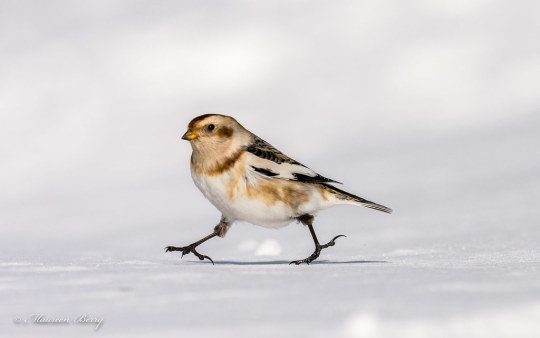#gomo.images
Photo

Snow Bunting (Plectrophenax nivalis)
© gomo.images
352 notes
·
View notes
Photo

Snow Bunting (Plectrophenax nivalis)
© gomo.images
174 notes
·
View notes
Photo

Snow Bunting (Plectrophenax nivalis)
© gomo.images
204 notes
·
View notes
Photo

Snow Bunting (Plectrophenax nivalis)
© gomo.images
86 notes
·
View notes
Photo

Snow Bunting (Plectrophenax nivalis)
© gomo.images
102 notes
·
View notes
Photo

Snow Bunting (Plectrophenax nivalis)
© gomo.images
125 notes
·
View notes
Video
Rabbit 06-June-20 M_002 by gomo.images
Via Flickr:
Came across this little rabbit yesterday on our walk, he stood bolt upright for some time turned looked at me and then ran off 😊 Rabbit Scientific name: Oryctolagus cuniculus Did you know? The rabbit is native to Spain and was introduced to this country by the Normans in the 12th century to provide food and fur. (Courtesy of The Wildlife Trusts)
10 notes
·
View notes
Video
Sunset The Cuillins Isle of Skye 15-Nov-19 M_001 by gomo.images
Via Flickr:
Sunset The Cuillins: Sunset taken driving south towards The Cuillins
49 notes
·
View notes
Photo

Harris Hawk 10-Jul-18 G 016 by gomo.images https://flic.kr/p/2cVmnas
18 notes
·
View notes
Photo

Small Heath 23-Jul-20_G _007 (In Explore) by gomo.images Small Heath:- Despite its name, the Small Heath is not confined to heathland and can be found in a wide variety of habitats. The main distinguishing feature of this species is that this is the smallest of our 'browns' and is closer in size to a skipper, Common Blue or Brown Argus than its relatives, such as the Meadow Brown. However, its fluttering flight is quite different from that of the skippers and blues and is relatively-easy to identify in the field. This charming little butterfly always settles with its wings closed, where the eye spot on the underside of the forewing is usually visible, acting as a decoy to any predator. The forewings are tucked behind the hindwings when roosting for long periods, or in dull weather, the butterfly looking quite inconspicuous as the browns and greys of the underside of the hindwing blend in with their surroundings. This is a widespread butterfly and can be found over most of the British Isles, with the exception of Orkney and Shetland and mountainous regions. It lives in discrete colonies and adults rarely venture far from the colony. However, the odd adult will venture further afield and will colonise nearby habitat if it is suitable. Courtesy of UK Butterflies website https://flic.kr/p/2jxw6cm
0 notes
Photo

Mountain Hare 18-Nov-17 G 006 by gomo.images Mountain Hare (Lepus timidus):- Mountain Hares live in Scotland and the North. They graze on vegetation and nibble bark from young trees and bushes. Hares shelter in a 'form', which is simply a shallow depression in the ground or heather, but when disturbed, can be seen bounding across the moors using their powerful hind legs to propel them forwards, often in a zigzag pattern. Mountain Hares live in upland areas and are most common on heathland; they are at their most visible in spring, when the snow has melted but the Hares are still white. (Courtesy of Scottish Wildlife Trust) http://ift.tt/2ASyoHK
2 notes
·
View notes
Video
Cairngorms G 032 by gomo.images
Via Flickr:
A trip up to the Ptarmigan Restaurant which is located at the Top Station of Cairngorm Mountain railway.
1 note
·
View note
Link

Wild Eurasian Otter The Eurasian otter (Lutra lutra), also known as the European otter, Eurasian river otter, common otter, and Old World otter, is a semiaquatic mammal native to Eurasia. The most widely distributed member of the otter subfamily (Lutrinae) of the weasel family (Mustelidae), it is found in the waterways and coasts of Europe, many parts of Asia, and parts of northern Africa. The Eurasian otter has a diet mainly of fish, and is strongly territorial. It is endangered in parts of its range, but recovering in others. Courtesy of Wikipedia https://flic.kr/p/23ZAG6U
0 notes